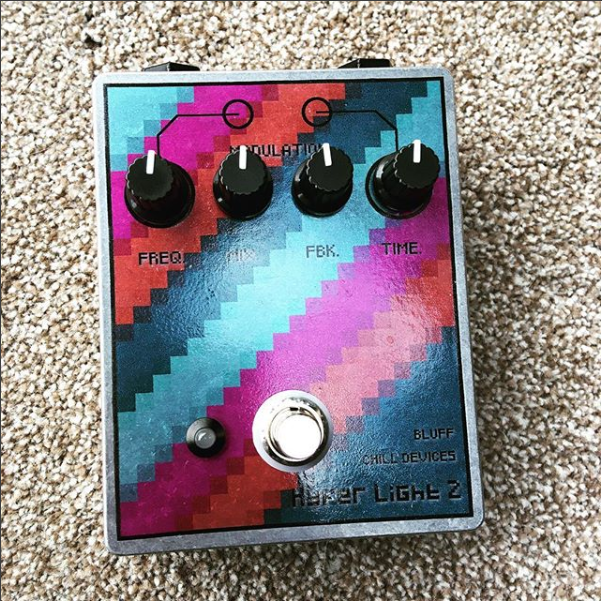It turned out to be relatively simple - the wet and dry outputs at pins 15 and 12 of the PT2399 were summed using a simple voltage divider of 2 10k resistors, so I replaced it with a potentiometer.
Easy! It almost seemed like too little an adjustment to be able to pass off as a custom or 'deluxe model', so I also replaced the 'release' switch on the envelope section with a potentiometer.
The switch chooses between going directly to ground and 250K resistance to ground, and similar to how it works on deadastronaut's version of the phuncgnosis, affects how long until the envelope closes, so you have more control over this.
Of course, now it had 4 knobs, so it needed to be bumped up to a larger enclosure (the design of the PCB didn't really allow 4 pots to fit) which also meant a redesign of the decal. An hour or so in GIMP and I came up with a horizontal 1590BB design.
I'm pretty pleased with the way it turned out - it's an uncluttered layout and makes perfect sense, while looking true to the original. Also used a lovely Plasti-kote matt finish lacquer on it, which feels way better than the usual high gloss stuff. It's also one of my neatest jobs on the inside too, especially considering more free-trailing wires than I usually like, due to the 'floating' pots.
Check out those white jacks! I have a limited supply of these but it seemed right to use them on this one.
Shipping this one tomorrow, and I hope the owner enjoys playing with this as much as I enjoyed making it. I did a little demonstration video:











